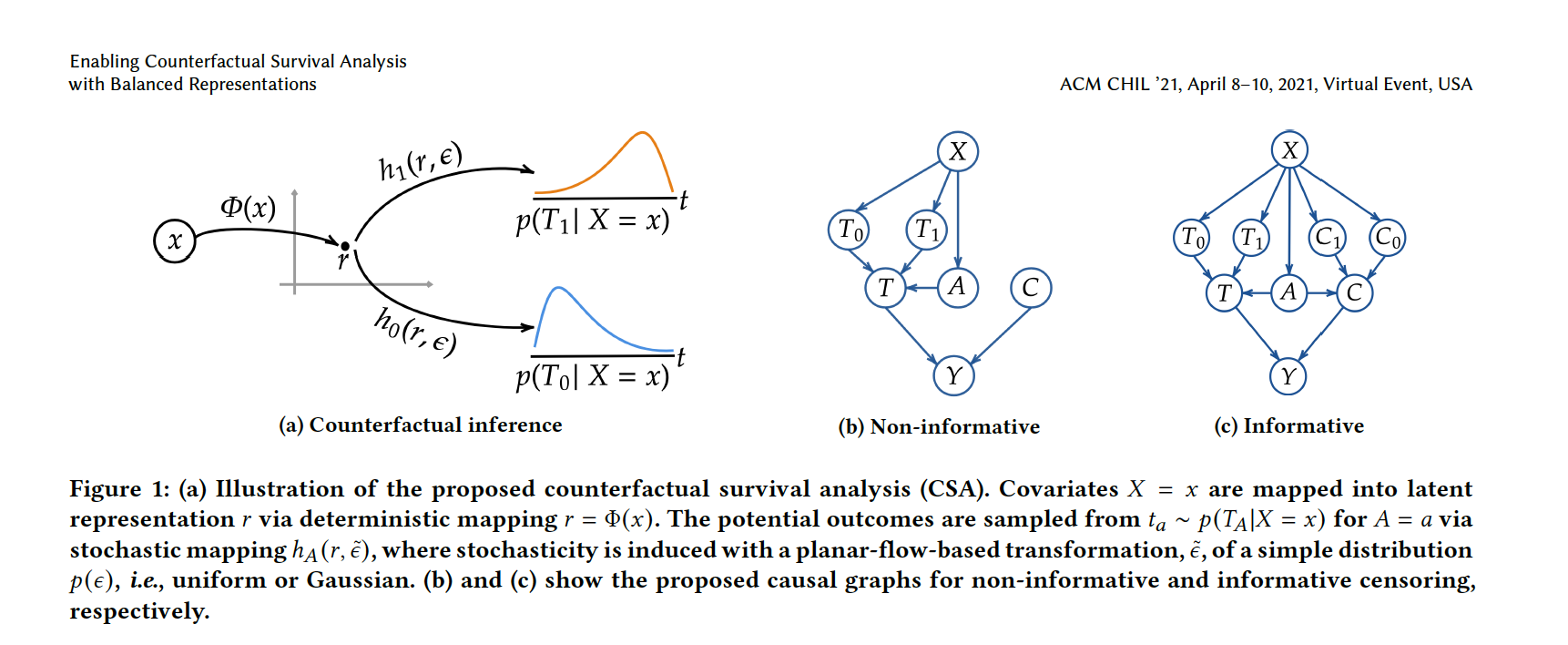Enabling Counterfactual Survival Analysis with Balanced Representations
Balanced representation learning methods have been applied successfully to counterfactual inference from observational data. However, approaches that account for survival outcomes are relatively limited. Survival data are frequently encountered across diverse medical applications, i.e., drug development, risk profiling, and clinical trials, and such data are also relevant in fields like manufacturing (e.g., for equipment monitoring). When the outcome of interest is a time-to-event, special precautions for handling censored events need to be taken, as ignoring censored outcomes may lead to biased estimates. We propose a theoretically grounded unified framework for counterfactual inference applicable to survival outcomes. Further, we formulate a nonparametric hazard ratio metric for evaluating average and individualized treatment effects. Experimental results on real-world and semi-synthetic datasets, the latter of which we introduce, demonstrate that the proposed approach significantly outperforms competitive alternatives in both survival-outcome prediction and treatment-effect estimation.
PDF Abstract



